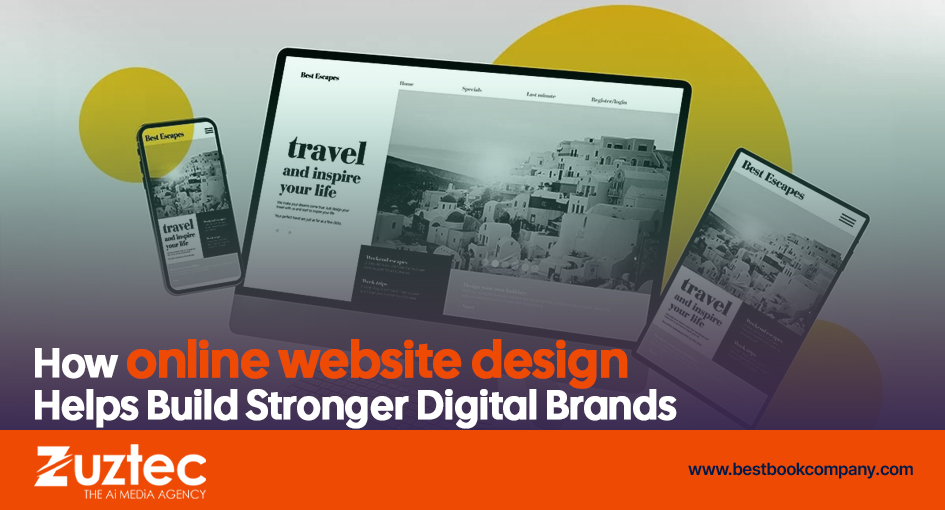
How Online Website Design Helps Build Stronger Digital Brands
Creating an impressive digital presence starts with having the right website. That means it needs to be attractive, easy to use, and designed to convert visitors into buyers. With the rise of digital services, many businesses now turn to online website design solutions to create and manage their web presence.
Whether you’re launching a new business or revamping an existing site, using a trusted online design platform or professional service can save time, money, and hassle. These services provide everything from templates and drag-and-drop editors to full custom design packages. They’re often more affordable and more efficient than traditional agencies, especially for small and medium businesses.
Online web design also gives business owners more control over their content and updates. With intuitive tools and pre-built elements, updates can be made quickly and easily. This helps brands stay agile and responsive to customer needs.
Most importantly, good design is not just about how a website looks—it’s about how it works. A well-structured site improves user experience, supports SEO goals, and increases your chances of driving conversions. In this article, we’ll cover the key benefits of online web design, what features to look for, and how to choose the right platform or provider for your needs.
Online Website Design For Modern Businesses
Online web design has become a go-to solution for businesses that want professional results without the high costs or long timelines of traditional design methods. One major benefit of online platforms is speed. With built-in themes and ready-made features, websites can often be launched in days instead of weeks. Many platforms also come with SEO features, mobile responsiveness, and security tools already included.
Another advantage is the user-friendly interface. Most services are designed for people with little or no technical experience. You can choose a template, customize it with your branding, and publish it—all without writing a line of code. Some services also offer AI tools to help generate content, select layouts, or optimize performance.
These tools also often include analytics dashboards, so you can monitor traffic, visitor behavior, and conversion rates. Having this data helps business owners make smart updates based on performance.
Essential Features Every Website Should Have
Whether you’re building your first website or updating an existing one, there are a few essential features that every design should include. These are not just about aesthetics—they’re about functionality and performance.
Another must-have is a strong SEO structure. Your design should support clean URLs, fast loading speeds, meta tag customization, and structured headings. These elements improve how your website ranks in search engines and how easily users find your content.
Navigation is also critical. Clear menus and an intuitive layout help users find what they need without frustration. The fewer clicks it takes to get from your homepage to a product or service page, the better the experience will be.
In the midbody of this article, it’s important to highlight that many online website design tools now include drag-and-drop editors, which allow you to build custom pages in minutes. This saves time and helps you maintain brand consistency across all parts of your site.
Choosing The Right Online Platform Or Service
The best platform for you will depend on your business goals, budget, and technical experience. Start by identifying your needs. Are you selling products online? Do you need a booking system for appointments? Are you building a portfolio or blog? Different platforms specialize in different areas. For example, Shopify is ideal for e-commerce, while Wix and Squarespace are good for content-rich sites.
Next, consider ease of use. Look for a platform that offers a free trial so you can test its interface. Make sure it includes customization options, built-in templates, and helpful support in case you get stuck.
Cost is another key factor. Some platforms charge monthly fees, while others offer pay-as-you-go models. Make sure the pricing is transparent and that there are no hidden fees for essential features like SSL certificates or domain connections.
Maximizing Results With A Well-Designed Website
Launching your website is just the beginning. To make the most of your online presence, it’s important to keep improving your site based on data and feedback. That’s where ongoing design updates and marketing efforts come into play.
Regularly review your website analytics to identify what pages are performing well and where users are dropping off. This helps you understand what content is resonating and what needs improvement. Small changes like updated headlines, better images, or simplified forms can have a big impact on conversions.
In conclusion, investing in online website design is one of the smartest decisions you can make for your business. It offers speed, flexibility, and control—all while helping you build a brand that looks professional and performs well. No matter what industry you’re in, the right design will support your goals and help you stand out.

